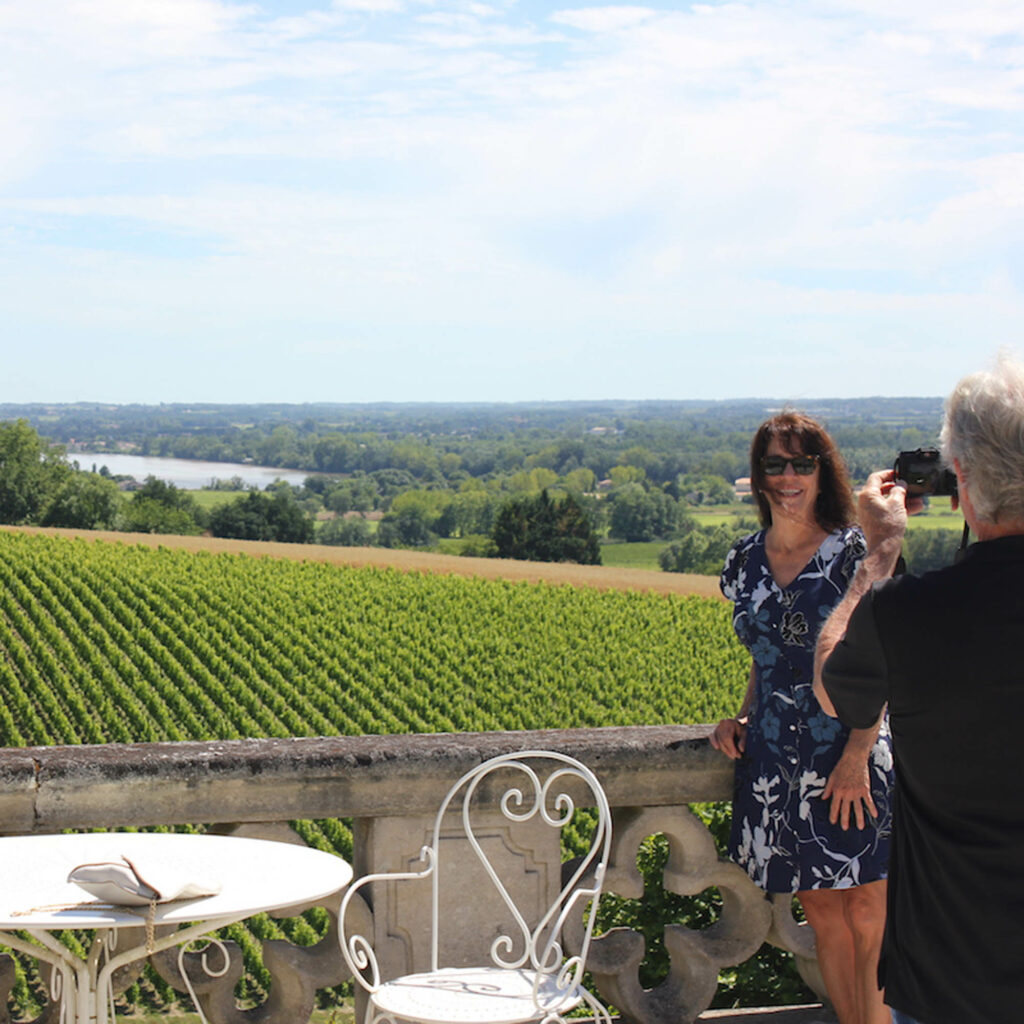

Across the river from Bordeaux’s grand Left Bank estates lies a different kind of beauty, quieter, softer, and deeply personal. The twin appellations of Pomerol and Fronsac may not flaunt their fame the way others do, but in their wines you’ll find something rare: emotion, depth, and a touch of mystery that keeps you coming back for another sip.
These neighboring regions sit just northwest of Saint-Émilion, spread along the rolling hills above the Dordogne River. Both share the same maritime climate and a mosaic of clay and limestone soils, yet their personalities couldn’t be more distinct.
Pomerol is refined and restrained, the definition of understated luxury. Fronsac is wilder, more dramatic, a landscape of steep slopes, Roman ruins, and small estates that make soulful, powerful reds. Together, they form the beating heart of Bordeaux’s Right Bank Merlot country.

Pomerol may be one of Bordeaux’s smallest appellations, but its influence is enormous. With no official classification system, its reputation rests entirely on quality, and that says everything. The best wines here combine richness and polish with an effortless grace that few regions can match.
The secret lies in Pomerol’s blue clay soils, found only in this small pocket of Bordeaux. These heavy, cool soils retain moisture and slow the ripening of Merlot, giving the wines their unmistakable texture and depth. At their best, they offer layers of black cherry, truffle, cocoa, and violet, wrapped in silky tannins that age for decades.
Names like Pétrus, Le Pin, and Vieux Certan have become legends, but what makes Pomerol truly special are the dozens of smaller family estates that line its country lanes. Without grand gates or long driveways, many still open their cellar doors to visitors by appointment, and those encounters often leave the most lasting impression.
Just a few kilometers west, Fronsac feels different the moment you arrive. The land begins to rise into hills and ridges that catch the morning sun, and the Dordogne River bends below in wide, reflective curves. Once the toast of 18th-century France, prized by nobility long before the Médoc was drained and planted, Fronsac is rediscovering the attention it deserves.
The wines are bold yet balanced, driven by Merlot with supporting notes of Cabernet Franc. Expect aromas of blackberry, cedar, and sweet spice, underpinned by the minerality of the region’s molasse limestone soils. The style is generous and full-bodied, but never heavy. The kind of red that fills the glass and the room with warmth.
Estates like Château de la Dauphine and Château de la Rivière carry centuries of history behind their gates, and both welcome guests with the friendliness typical of Fronsac. At some properties, tastings take place in vaulted stone cellars or beneath leafy terraces overlooking the river valley. Experiences that feel more like being invited into someone’s home than visiting a commercial winery.


Between these two flagship appellations lie several smaller ones worth exploring. Canon-Fronsac, with its steep slopes and sun-drenched vineyards, produces wines of depth and spice (a favorite among those who know Bordeaux well). Just north of Pomerol, Lalande-de-Pomerol offers Merlot-based reds that share Pomerol’s silky charm but at gentler prices. Both are full of welcoming, family-run châteaux where tastings often end in friendly conversation and generous pours.
A typical day on Bordeaux’s Right Bank might begin with a scenic drive through the countryside toward Fronsac, often called the “cradle of great Bordeaux wines.” Your guide might lead you through a hilltop château that doubles as a historic fortress, with views stretching over the Dordogne Valley. Below the estate, you’ll find barrel-lined cellars and even the occasional hidden tunnel, reminders of a past when wine and defense shared the same walls.
Lunch might be served on a shaded terrace beneath the vines, paired with mature vintages and a board of local cheeses and charcuterie. Afterward, you’ll continue to Pomerol, visiting a small, family-owned estate where the owner still tends the vines himself. The wines are deep, velvety, and quietly powerful, the kind that linger long after the glass is empty.
By the time you return to Bordeaux, the sun will be low, the hills softly glowing, and you’ll understand why so many travelers fall for the Right Bank’s gentler rhythm.
